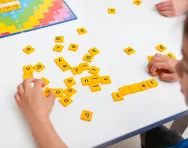Important update from TheSchoolRun
For the past 13 years, TheSchoolRun has been run by a small team of mums working from home, dedicated to providing quality educational resources to primary school parents. Unfortunately, rising supplier costs and falling revenue have made it impossible for us to continue operating, and we’ve had to make the difficult decision to close. The good news: We’ve arranged for another educational provider to take over many of our resources. These will be hosted on a new portal, where the content will be updated and expanded to support your child’s learning.
What this means for subscribers:
- Your subscription is still active, and for now, you can keep using the website as normal — just log in with your usual details to access all our articles and resources*.
- In a few months, all resources will move to the new portal. You’ll continue to have access there until your subscription ends. We’ll send you full details nearer the time.
- As a thank you for your support, we’ll also be sending you 16 primary school eBooks (worth £108.84) to download and keep.
A few changes to be aware of:
- The Learning Journey weekly email has ended, but your child’s plan will still be updated on your dashboard each Monday. Just log in to see the recommended worksheets.
- The 11+ weekly emails have now ended. We sent you all the remaining emails in the series at the end of March — please check your inbox (and spam folder) if you haven’t seen them. You can also follow the full programme here: 11+ Learning Journey.
If you have any questions, please contact us at [email protected]. Thank you for being part of our journey it’s been a privilege to support your family’s learning.
*If you need to reset your password, it will still work as usual. Please check your spam folder if the reset email doesn’t appear in your inbox.
Universal Credit explained for parents of primary school children

Universal Credit is a means-tested benefit for people of working age who have a low income. It replaces six existing means-tested benefits, combining them into a single monthly payment. These benefits are:
- Income Support
- Income-based Jobseeker’s Allowance (JSA)
- Income-related Employment and Support Allowance (ESA)
- Housing Benefit
- Child Tax Credit
- Working Tax Credit
Are you eligible for Universal Credit?
The amount of Universal Credit you may be entitled to can be hard to work out, so use the Turn2Us Benefits Calculator to find out whether you’re eligible, and how much you may be able to claim.


Free puzzle packs for your child!
- Word Puzzle Packs
- Numeracy Puzzle Packs
- Challenging and exciting | Boost key skills
How much Universal Credit could you get?
Universal Credit is a ‘basic allowance’ based on your household’s income.
On top of this, there are ‘additional elements’ that may entitle you to more money. Some of these relate to being responsible for a child or a qualifying young person (basically, a child aged 16-20 who is in approved education or training) who normally lives with you.
The Child Element is £237.08 per child, per month. If your child was born before April 6 2017, the monthly payment is £282.50 per month and is known as the Family Element.
Usually, there is a two-child limit, so if you have three children or more, you won’t be entitled to any more money. There are certain exceptions, such as having a multiple birth or adopting a child: you can find out about these on the Government’s benefits website.
The Childcare Element is a contribution towards the cost of registered childcare while you’re at work. Generally, if you’re part of a couple, both of you need to be in work (subject to certain exceptions), although there’s no set amount of hours that you should be working.
You will get 85% of your childcare costs paid, up to £646.35 for one child, and £1,108.04 for two or more children. Again, there is a two-child limit.
The Disabled Child Element is available if your child or qualifying young person is disabled and entitled to disability benefits.
How to apply for Universal Credit
You’ll need to create a Universal Credit account online, and have the following information handy:
- Your bank details
- Information about your housing, e.g. how much rent you pay
- Details of your income, e.g. payslips
- Details of any savings or investments
- Details of how much you pay for childcare.
How to use Universal Credit
Some elements of Universal Credit must be used for specific purposes.
For example, the Childcare Element must be used to pay for approved childcare (which can include before- and after-school childcare for school-age children). You must be able to provide proof of this.
Other elements, including the Family or Child Element, can be used as you wish to support you bringing up your child(ren).








